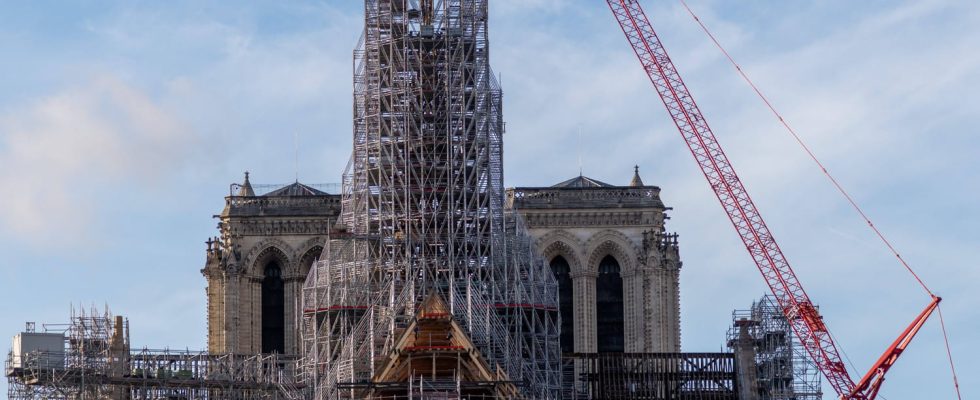While Emmanuel Macron is visiting the construction site of Notre-Dame de Paris cathedral this Friday, December 8, the use of lead in the reconstruction of the spire is the subject of debate.
New important step in the reconstruction of Notre-Dame: the cross of the cathedral’s spire was installed this Wednesday, December 6. After the fire of April 15, 2019, the Head of State expressed his desire to rebuild the cathedral “identically”, which involves a cover and lead ornaments as the 19th century architect had done. century, Viollet-le-Duc. The spire should therefore be covered with lead again and the covering should begin in 2024. This decision nevertheless remains very controversial.
The risks posed by the use of lead
The use of lead, a material well known for its toxicity, in the reconstruction of Notre-Dame alarms local residents as well as certain elected officials and NGOs. The World Health Organization (WHO) states on its website that “exposure to lead can impact multiple body systems and is particularly harmful to young children and women of childbearing age.” Exposure to this material can lead to many health problems like digestive disorders, nervous system damage, kidney disruption, to name a few. The WHO states above all that “there is no safe concentration of lead in the blood.”
The health risk posed by lead became tangible after the cathedral fire in 2019 when the toxic material was deposited in the surrounding area, putting local residents in direct contact with it. The main risk for residents on a daily basis concerns runoff. In an opinion published in January 2021, the High Council of Public Health (HCSP) estimated that “the roof of Notre-Dame alone (…) would emit around 21 kg of lead per year (and two tonnes per century) into the waters runoff”. And the promise made by the former head of the Notre-Dame construction site, Jean-Louis Georgelin, to analyze the rainwater before it was dumped into the Seine was not very convincing. At the microphone of France Culture At the beginning of December, Maxence Hecquard, president of the association for the defense of the site and its surroundings, denounced: “It is very worrying for local residents because from time to time we see workers dressed like cosmonauts passing by to avoid lead and besides that our children play in the street next door. There is little official communication.” The environmentalist senator from Paris Anne Souyris again challenged in the Senate on December 5 the use of 400 tons of lead for the reconstruction and called for the construction site to be interrupted while an alternative was found.
Possible alternatives
Among the possible alternatives, copper would seem to be a good option because this material has already been used in the renovation of other cathedrals, notably that of Chartres. A hypothesis supported by architects, like Jean-Michel Wilmotte when he confided to the microphone of France Inter in 2019 that there are “new means, new techniques. We are not obliged to reuse lead, which is a very heavy material”.
